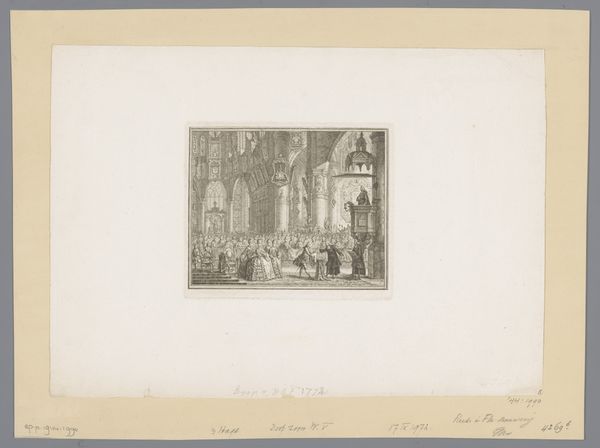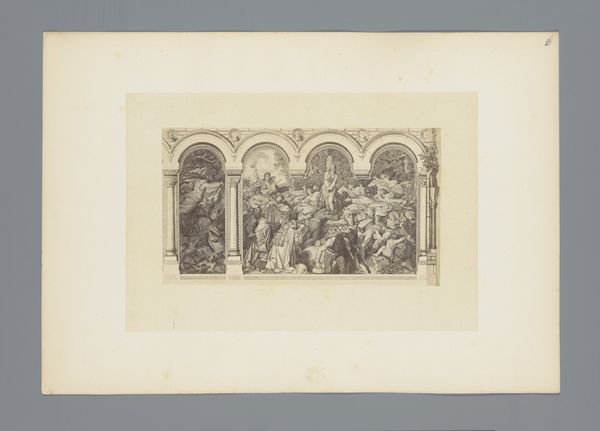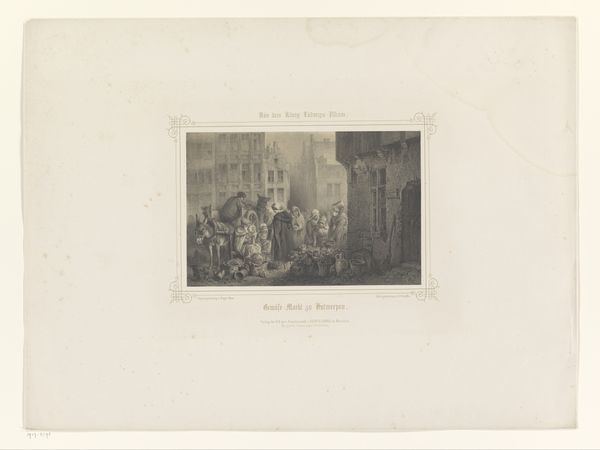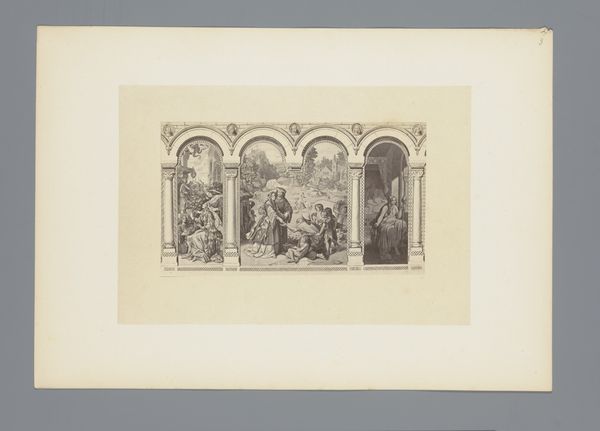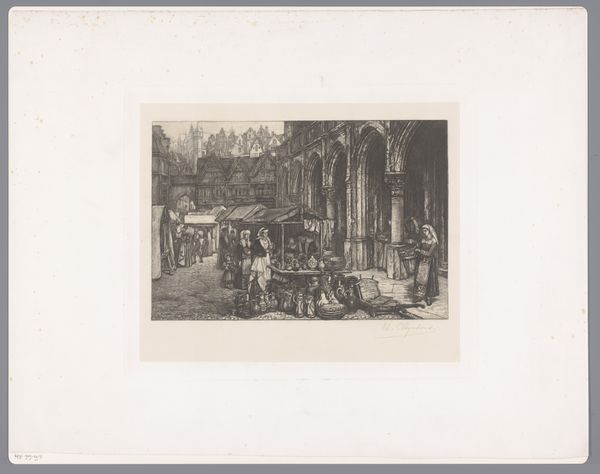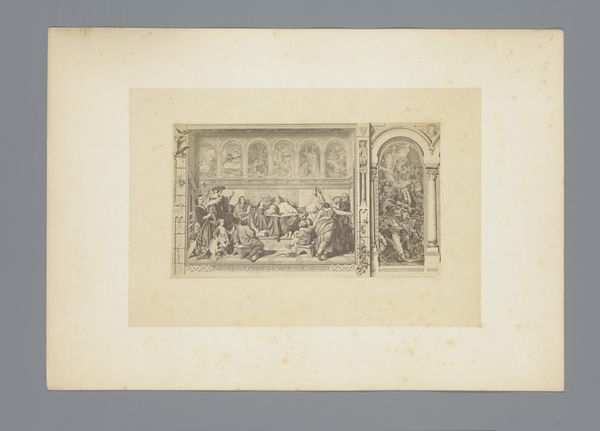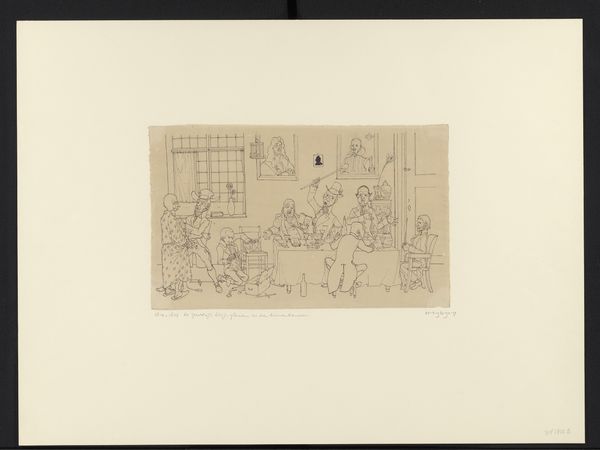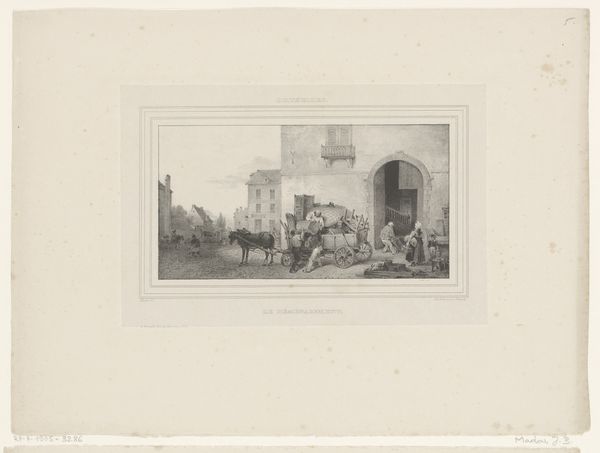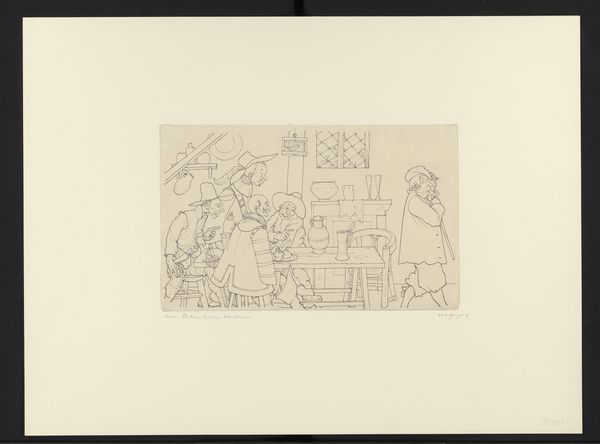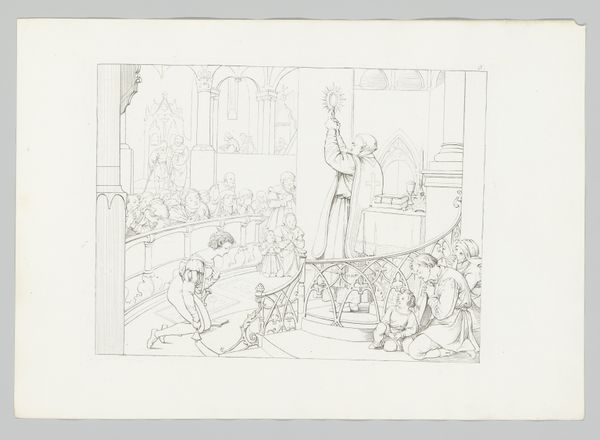
drawing, paper, ink
#
drawing
#
narrative-art
#
landscape
#
paper
#
ink
#
genre-painting
#
miniature
Dimensions: height 189 mm, width 308 mm
Copyright: Rijks Museum: Open Domain
Curator: Here we have a miniature genre scene by Johan Huizinga entitled “1444 / In Dodewaard wordt een bloeiende appelboom gezien in maart”, made between 1893 and 1895, employing ink on paper. What's your immediate take? Editor: It has such a wistful, old-world feel, even down to the palette. It evokes illuminated manuscripts, medieval tapestries. Curator: That resonates. The narrative elements stand out—it seems to echo themes found in Book of Hours illustrations, connecting cycles of nature to human life and even societal norms, which are depicted throughout the artwork. Editor: And that is interesting when you think about power structures. What societal norms is it promoting, exactly? This garden is a public space where we see wealth side by side with more quotidian types; perhaps its value lies in how it captures society in transition. Curator: It really might. These miniature figures, almost archetypal in their rendering, seem rooted in much earlier symbolic traditions of status and role-playing. Even the blossoming apple tree has its historical resonance as an emblem of spring and rejuvenation, mirroring the hopeful spirit of the populace. Editor: True. Consider the positioning of the characters relative to the cathedral behind them. Huizinga uses the structure to indicate where power is in Dodewaard, as the townsfolk celebrate beneath it. It does seem quaint at first glance, but its depiction subtly enforces social structure. Curator: So its simplicity works as an access point, revealing these complex issues in the social and civic history. The drawing style may look rather humble. The seemingly simple forms might actually draw us into its complexity! Editor: Absolutely! Thanks to Huizinga's attention to context and details, what at first appears bucolic begins to reveal much deeper cultural implications.
Comments
No comments
Be the first to comment and join the conversation on the ultimate creative platform.
